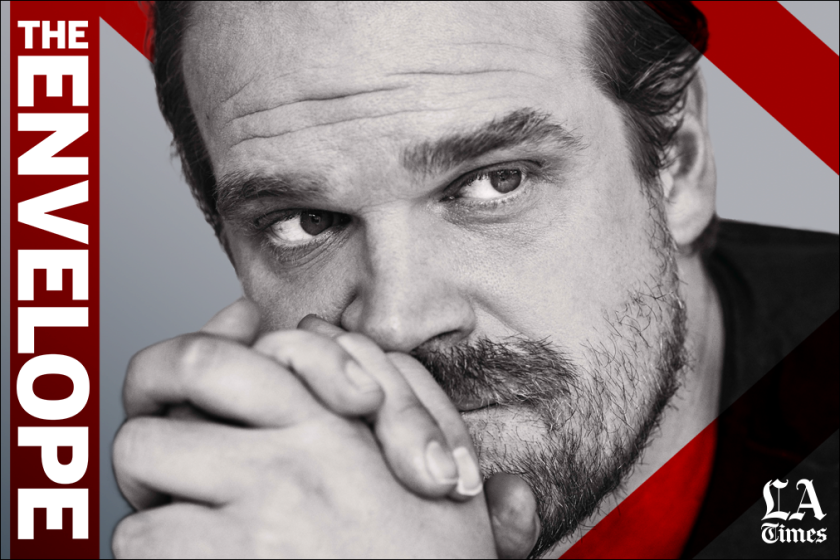How David Harbour went from ‘anti-Christmas’ guy to action hero Santa in ‘Violent Night’
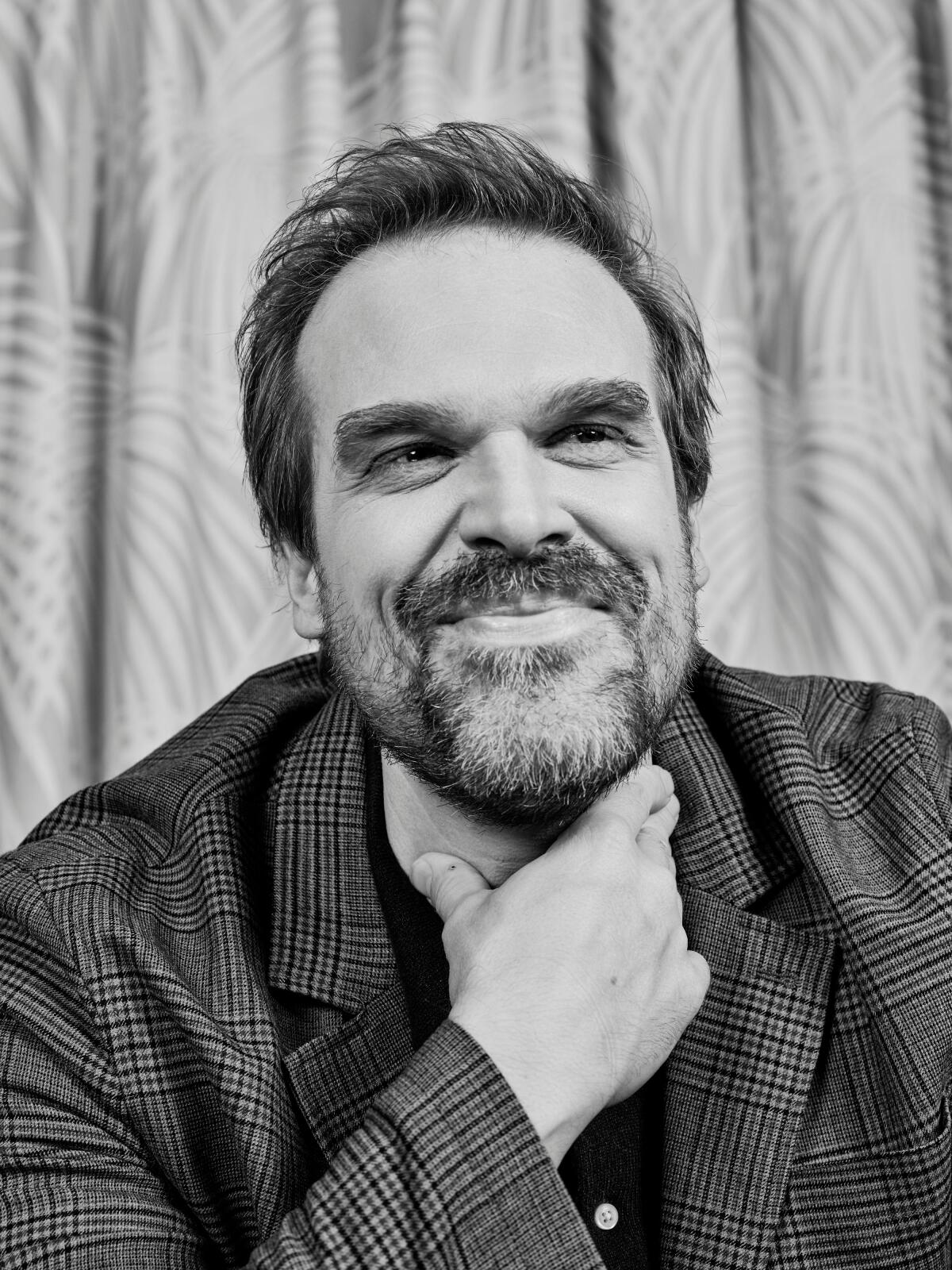
- Share via
David Harbour wasn’t always big on the holidays. Until the “Stranger Things” star had a family of his own, he says, the yuletide blues made him downright “anti-Christmas.” Now the Emmy- and Golden Globe-nominated actor is embracing the spirit of the season in Universal’s R-rated “Violent Night” as a Santa Claus with a dark past who takes on armed mercenaries on Christmas Eve.
The gory holiday action comedy, scripted by “Sonic the Hedgehog” duo Pat Casey and Josh Miller and directed by Norwegian helmer Tommy Wirkola (“Dead Snow,” “Hansel & Gretel: Witch Hunters”), imagines a Santa who reluctantly takes up arms — and a giant hammer affectionately nicknamed the Skull Crusher — when a little girl (Leah Brady) and her family are taken hostage during his yearly rounds. Alex Hassell, Alexis Louder, John Leguizamo and Beverly D’Angelo, in a comical 180 from her “National Lampoon’s Christmas Vacation” matriarch Ellen Griswold, also star.
Various Christmas mythologies offered a wealth of character inspiration, Harbour said, including who’s nice, who’s naughty and the possibility of redemption. “The Christian tradition of Old St. Nick comes from St. Nicholas, who was this patron saint of repentant sinners,” he said. “I thought that was so interesting, this idea that you could turn it around and get on the ‘nice’ list.”
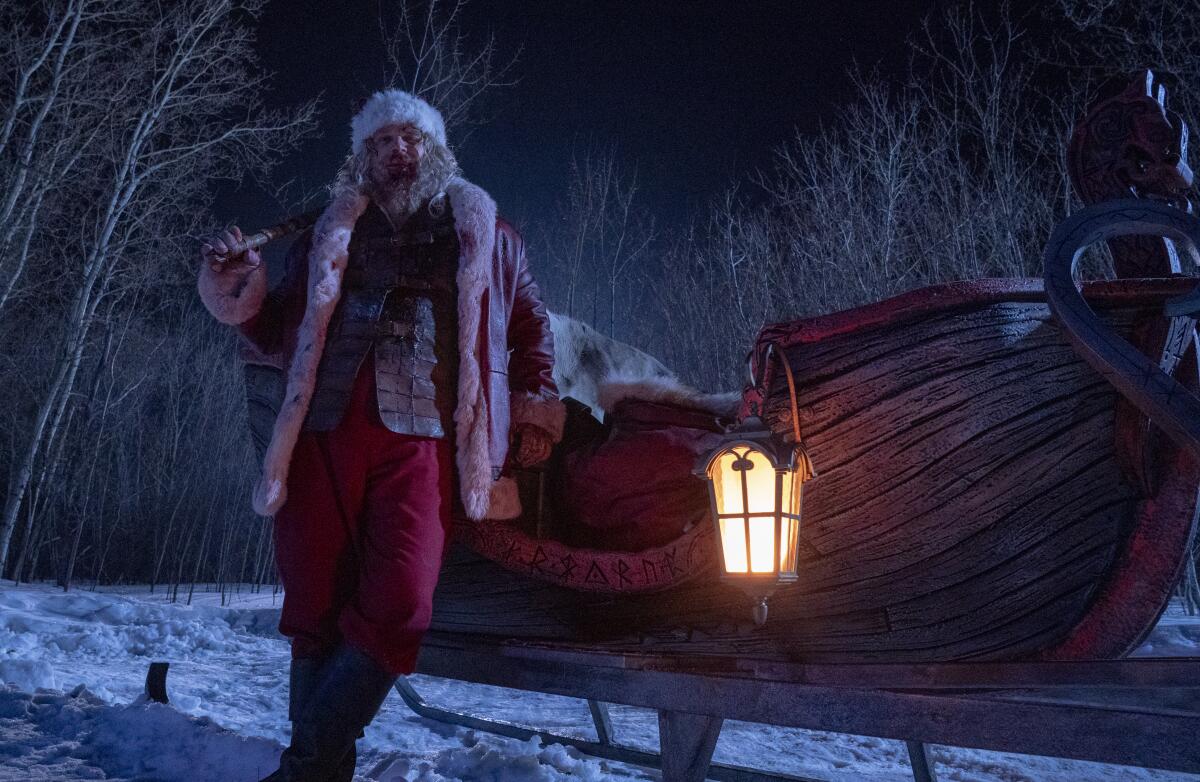
‘Violent Night’ can’t decide if it’s naughty or nice; not even David Harbour and John Leguizamo can elevate it’s ‘Die Hard’/’Home Alone’ aspirations.
The role also taught Harbour new action tricks under producers David Leitch, Kelly McCormick and Guy Danella’s 87North Productions (“Atomic Blonde,” “John Wick,” “Nobody”) — and, with an inventive Viking backstory, required him to find the inner warrior within a beloved figure best known for being jolly and kind.
To convey these complexities, Wirkola sought a Santa who could bring the right blend of humor and physicality to the role. “A key trait for our Santa is his pure and raw strength, and we felt that David had that in spades,” he said in an email. “Somebody who, when he walks into a room, you’d feel like he could easily kick your a—. A menacing presence, so to speak.”
But most importantly, this “Die Hard” Santa needed “a big beating heart underneath all of that rough exterior,” said Wirkola. “We always should be able to feel that heartbeat, that warmth, despite all the craziness that surrounds both him and the story. David had all those things and more, and just as important, he knew how to expertly shift between those things as the story progressed.”
Filmed last winter in Winnipeg, Manitoba, as the crew navigated subzero temperatures so cold the cameras wouldn’t work (“Those were not the days that I was full of love for Christmas,” Harbour laughed), “Violent Night” now enters the canon of Christmas movies that will be revisited every holiday season — much like “Home Alone,” “Die Hard” and his own faves, “Miracle on 34th Street” and “It’s a Wonderful Life.” Harbour was still letting that sink in as he chatted from Budapest, Hungary, where he’s filming the video game adaptation “Gran Turismo.”
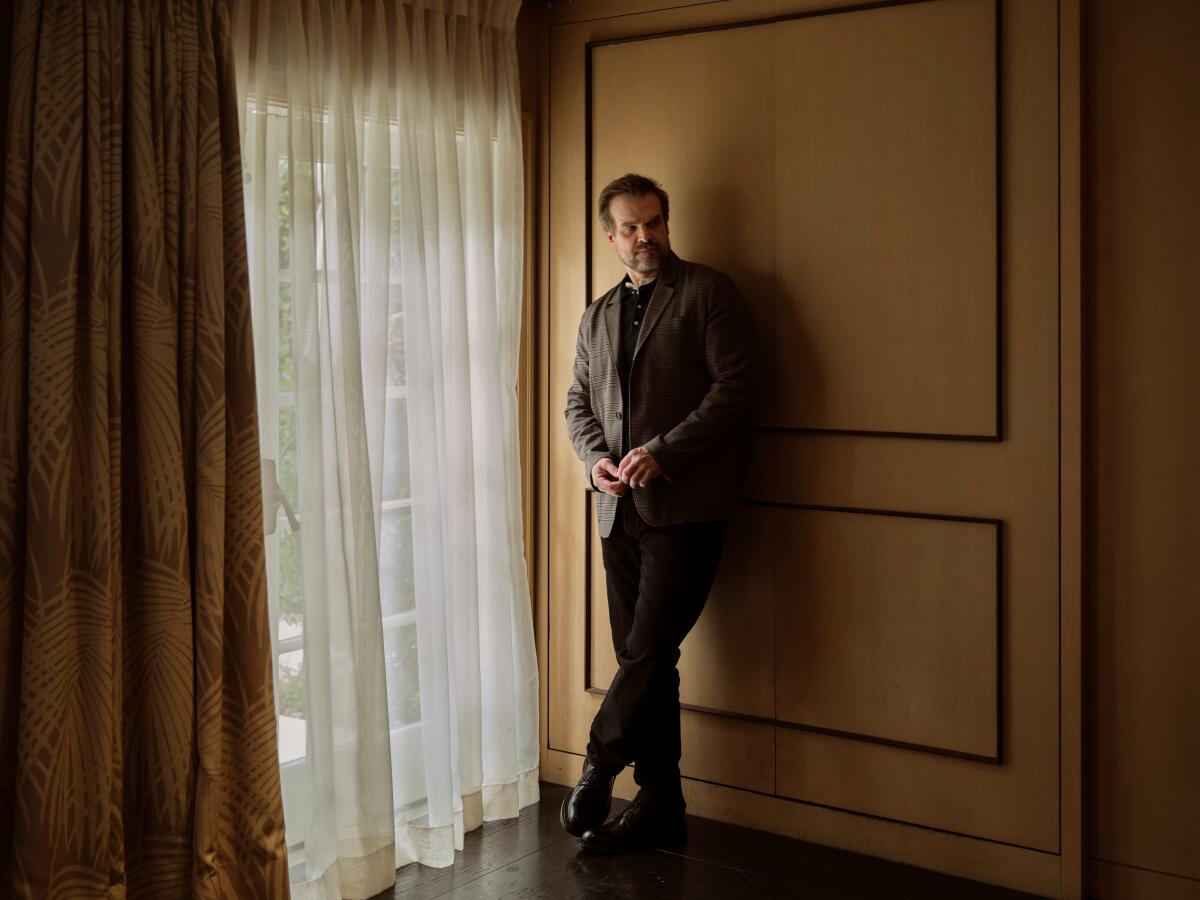
So, David: Are you a Christmas person?
Not really. When I was a kid, of course. I don’t know that there are many kids that aren’t because it’s a great time. You just get presents! But for most of my adult life, I’ve been a single guy, and that made holidays in general kind of hard and depressing. I’d get presents for people, friends and family, but I wasn’t big on it for years and years. Now that I have a little family of my own, it feels more special. I’m excited about putting up the tree for them and things like that. But for most of my life, I was really an anti-Christmas guy. There is a lot of mental health stuff around Christmas, too, where people get depressed, and I was definitely one of those people.
That’s what makes the opening scene of “Violent Night” so relatable: We meet Santa, sitting at a bar, drinking on Christmas Eve.
Taking a break and getting s—faced before you’ve got to get back on the sleigh ...
And, metaphorically, back on the sleigh of life. Relatable! At first you were unsure about the idea of a “Die Hard” Santa movie. What was it that made you say, “OK — I’m in?”
There were two moments. The first was, they wanted me to have a meeting with the director [Tommy Wirkola] and David Leitch the producer before they sent me the script, which I thought was a bad sign, but part of it was to see their enthusiasm about it. Leitch is very good with “John Wick” and “Atomic Blonde,” all the action stuff that he does. Then Tommy really won me over with his passion for Christmas movies. He’s Norwegian, an excitable guy. In Norway, they have a bunch of reindeer. He kept talking about reindeer, how they eat reindeer burgers up there. He was so excited about that pagan aspect of Christmas, and that was intriguing to me.
Then they sent me the script, and it was really smart. We developed it even further when we started working on it. At the end, it felt like a Christmas movie, but how it got there was so super weird. It went to this violent, very acerbic, funny place as an action comedy. You have him going, “Ho ho ho, you really made me find my heart again,” but blood is dripping down his face. There was something about that feeling that I was like, “Oh, this will be wonderful. I’ll get to make a Christmas movie. My kids won’t be able to see it, but I’ll make a Christmas movie.”
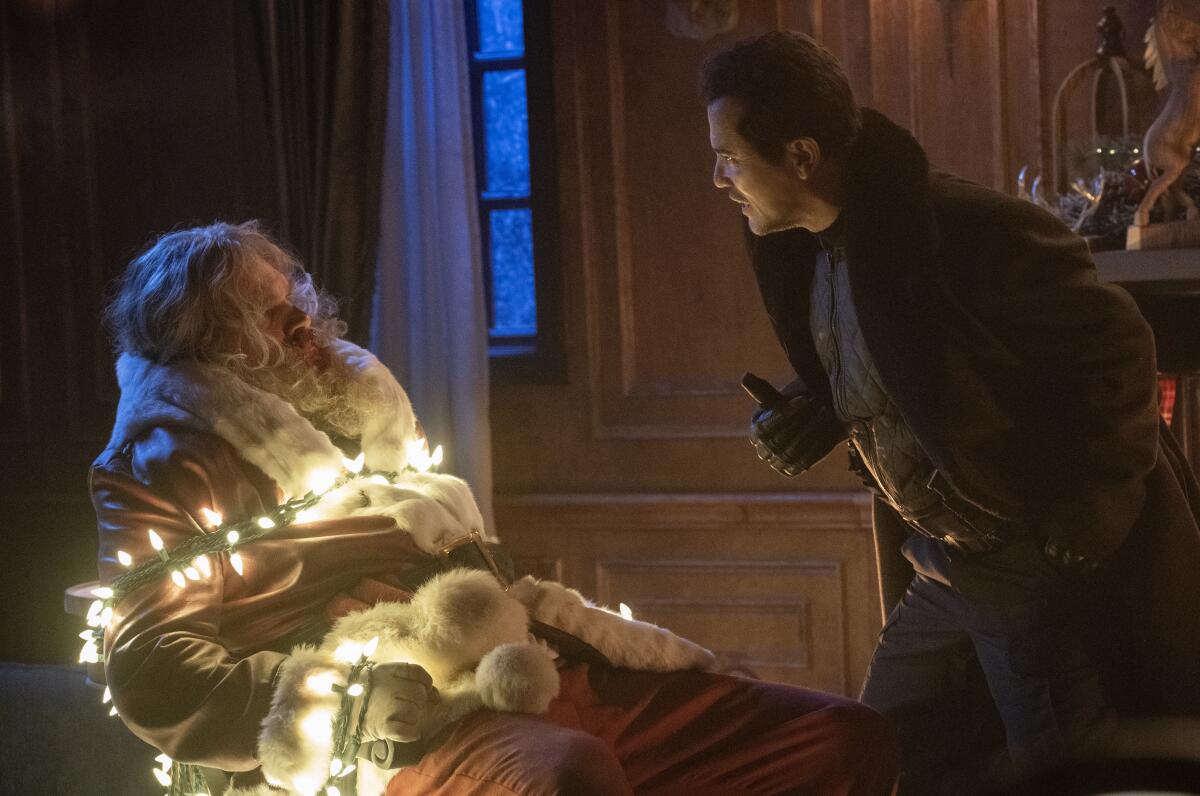
Do you have a favorite Christmas movie of your own?
I love “Miracle on 34th Street” — the original one. I’m a traditionalist when it comes to movies. Of course I love “Die Hard,” “Bad Santa” and all of those movies too, but when it comes to sitting down and watching a Christmas movie, I could watch the s— out of “It’s a Wonderful Life.” Deep down in my core, I am a sweet, sappy, sentimental guy, and something about that movie is — as the kids say — so pure.
Jimmy Stewart feeling like he doesn’t have any meaning in his life and that he never amounted to anything, then realizing that all these little things that he did were so important to everyone else, is a beautiful thing to feel at Christmas. Especially when I was alone. When you are alone, you feel sad about your situation. And to turn that on and feel a part of something larger than yourself was really nice.
Some actors might find it intimidating to take on such a historic and iconic figure as you do in “Violent Night.” Othello, Hamlet ... Santa Claus.
It’s true! You’re not the first person to bring up the fact that it should have been somewhat intimidating. [Laughs.] It’s either my extreme confidence in myself or my ignorance. I wasn’t worried about taking on the role in that way. I was worried more about the movie as a whole. I was like, does this work? And what it felt like [was] a big swing — and if we’re going to swing, we better swing for the fences.
The great thing about Santa is that you think you know him. But he really is just this thing that was created by the Coca-Cola Co. in the 1930s, an image of a fat guy with a jolly beard. Like, who the hell is this guy? You can go off in all sorts of directions, and that’s what our movie allows us to do. In that way, it’s almost easier than Hamlet, which is so defined. With Santa, there’s a lot more freedom to explore who he was and how he got to the place where he is, and the movie takes a stab to deconstruct it in the opposite direction.
When’s the last time you feel like you took a big swing?
I feel like everything you make when you put yourself out there is a big swing. But I do remember starting “Stranger Things” and starting Jim Hopper in the first season and feeling like I reinvested in myself as an actor in a way that I hadn’t in a lot of years. It felt like I was pouring myself into film and TV in a way that I had let go of.
When you signed on to “Stranger Things,” could you envision where you would be now with the show [now going into its fifth season]?
I thought I would still be in my 400-square-foot apartment in the East Village, barely able to pay my rent and doing off-Broadway plays! But then “Stranger Things” changed everything.
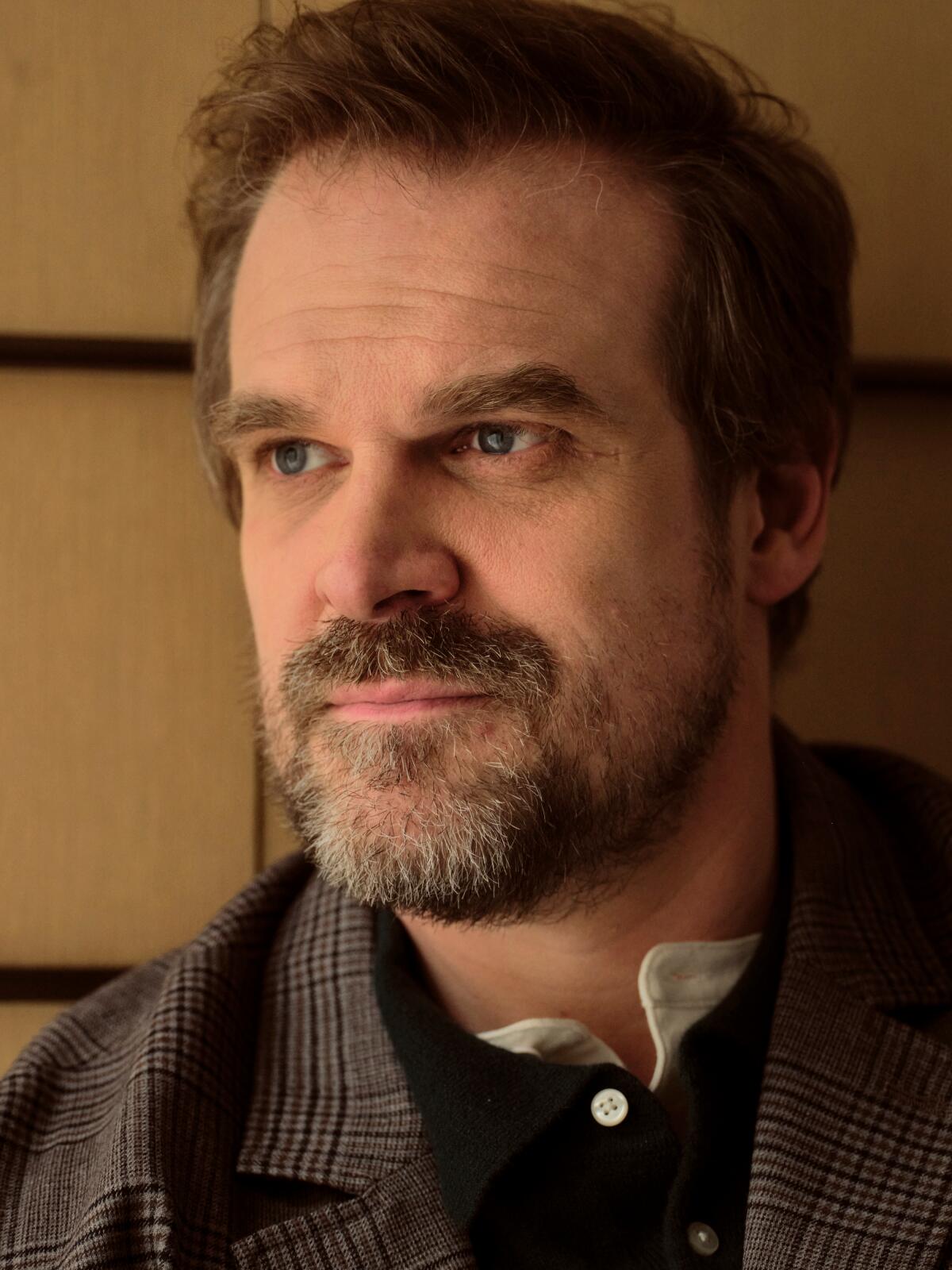
And now you are recontextualizing one of the most beloved and well-known emblems of the last few centuries. Your Santa of “Violent Night” has become bitter and jaded by rampant consumerism and the loss of the collective Christmas spirit.
It was definitely something that I thought about. I think that Santa created a prison for himself because he felt so guilty about who he was in his Viking era. He decided to become this fat, jolly, saccharine guy who gives little gifts to kids and let go of all of this warrior stuff. But instead of inspiring generosity, he inspired greed and consumerism and the sugary idea that we gotta eat more candy, it isn’t enough, as opposed to the idea of giving. And so for him to go back and to have a little girl say to him, “We don’t need that guy who gives us little crappy gifts — we need the guy who was the warrior, who did things that you might think are bad, but you’ve let go of those pieces of yourself that we need right now” — I thought that was a cool thing.
During the shooting of it, we were up in Winnipeg and the new “Batman” movie came out, and we all went to see it and loved it. I thought it was similar to our movie in the sense of, Batman in that movie has to become a third thing; he becomes vengeance. There’s a similar theme here, where Santa has this very clearly defined idea of Christmas. People have this idea of him, of Christmas, of nice and naughty. And he has to go back in the midst of this violence, and become violence itself to combat it. Because you can’t just give these bad guys little gifts and make everything OK. You’ve got to stand up. You’ve got to do something. You’ve got to be the man who you used to be. That was a fun action hero origin story in the Santa Cinematic Universe.
‘Stranger Things’ star David Harbour discusses Hopper’s transformation, his own mental health journey, and ‘Black Widow’ parallels.
You’re working here with one of the most renowned action outfits in Hollywood, but a lot of it appears to be you doing your own stunts onscreen. Was that the case?
That’s not the norm for me. For example, in “Black Widow,” most of that isn’t me because I couldn’t do so much of it. I was very bad at that stuff. After “Black Widow,” I started to get better. Working with these guys was a whole different level. They work in a style that worked much better for me. What I used to do in the past is, you choreograph something and you learn the specific moves of that choreography, and then you execute it on the day. And I’m terrible at that. I remember early in my career I was trying to do musicals. You’d go to dance calls, and the choreographer would be like, “And, step change and this and this,” and it’s a nightmare for me. If you give me like a monologue, at lunch I can learn it and do it that day because my brain thinks in terms of language, it thinks in terms of psyche and behavior. But dance and physical movement unconnected to psychological reality? I can’t do it. You’ll choreograph this entire sequence and work on it for weeks, and then I’ll still be like, wait, is it a punch here and then a punch here?
So showing up to these guys, I was really nervous. But they had a different way of working. We would create segments — it would be like punch, punch, up, dodge, elbow or something. And you build a bunch of different blocks you understood, then on the day, you can put those blocks together. It became a language that I could execute very easily, and it was a whole new world for me.
But these guys are not only good at what they do with choreography, they’re really good at teaching actors. I think it’s the reason why Bob Odenkirk in “Nobody” really wanted to work with them, or Charlize Theron in “Atomic Blonde.” Certainly Keanu in the “John Wick” movies. They understand what we do and they apply their stunt language to us, as opposed to having us step into their world. It’s really generous, and it’s a very special group of guys.
More to Read
Only good movies
Get the Indie Focus newsletter, Mark Olsen's weekly guide to the world of cinema.
You may occasionally receive promotional content from the Los Angeles Times.

